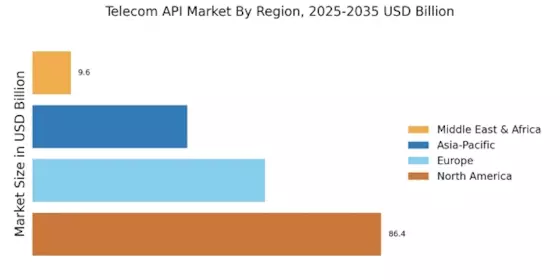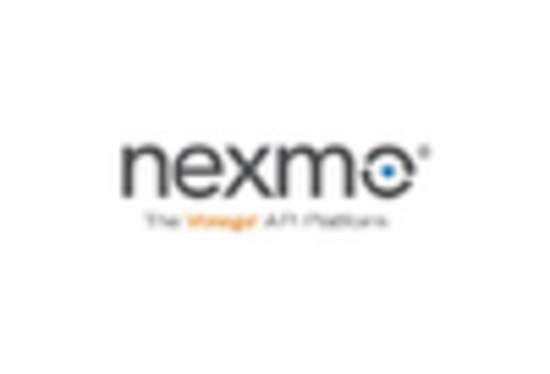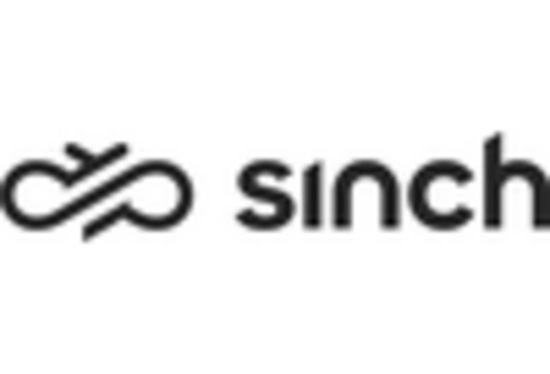The Telecom API Market is currently characterized by a dynamic competitive landscape, driven by rapid technological advancements and increasing demand for seamless communication solutions. Key players such as Twilio (US), Vonage (US), and Sinch (SE) are strategically positioning themselves through innovation and partnerships, which appear to be pivotal in shaping the market's trajectory. Twilio (US), for instance, focuses on enhancing its platform capabilities, while Vonage (US) emphasizes expanding its global reach through strategic acquisitions. Sinch (SE) is also notable for its commitment to integrating AI into its offerings, thereby enhancing customer engagement and operational efficiency. Collectively, these strategies foster a competitive environment that is increasingly centered around technological differentiation and customer-centric solutions.
In terms of business tactics, companies are increasingly localizing their operations to better serve regional markets, which may enhance responsiveness to customer needs. The Telecom API Market is moderately fragmented, with a mix of established players and emerging startups. This fragmentation allows for diverse offerings but also intensifies competition among key players, as they strive to capture market share through innovative solutions and strategic collaborations.
In September 2025, Twilio (US) announced a significant partnership with a leading cloud service provider to enhance its API capabilities, which is expected to streamline integration processes for developers. This move is strategically important as it not only broadens Twilio's service offerings but also positions the company to leverage the growing demand for cloud-based communication solutions. Such partnerships are likely to enhance Twilio's competitive edge in a market that increasingly values interoperability and ease of use.
In August 2025, Vonage (US) completed the acquisition of a prominent messaging platform, which is anticipated to bolster its API portfolio significantly. This acquisition reflects Vonage's strategy to diversify its service offerings and enhance its competitive positioning in the market. By integrating advanced messaging capabilities, Vonage aims to provide a more comprehensive suite of communication solutions, thereby appealing to a broader customer base and potentially increasing its market share.
In July 2025, Sinch (SE) launched a new AI-driven analytics tool designed to optimize customer interactions across various channels. This initiative underscores Sinch's commitment to leveraging artificial intelligence to enhance user experience and operational efficiency. The introduction of such innovative tools is likely to set Sinch apart from competitors, as businesses increasingly seek data-driven insights to inform their communication strategies.
As of October 2025, the Telecom API Market is witnessing trends that emphasize digitalization, sustainability, and the integration of AI technologies. Strategic alliances are becoming increasingly crucial, as companies recognize the need to collaborate to enhance their technological capabilities and market reach. Looking ahead, competitive differentiation is expected to evolve, with a notable shift from price-based competition towards innovation, technological advancement, and supply chain reliability. This evolution suggests that companies that prioritize these aspects will likely emerge as leaders in the Telecom API Market landscape.


















Leave a Comment